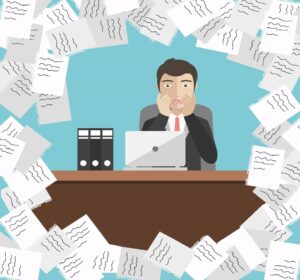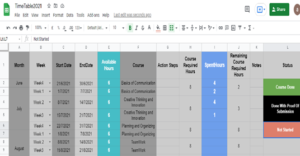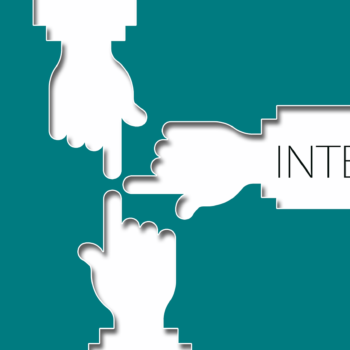
Work Smart not Hard
- Posted by Yomna Anwar
- On September 14, 2021
These days we see people engaged with so many tasks at the same time. Some of these tasks are extremely urgent that they must be finished immediately, while others are not as time-critical.
The worst thing about that is if you do not know how to arrange your priorities, you can easily get lost in your tasks and do not know where to start or what to do. So, in this article, we will go through some tips that can help you plan and prioritize your tasks so you can work smarter not harder.
Let us imagine there are 2 persons. Person A is called Ahmed while person B is called Hossam.
Ahmed and Hossam are working in the same company. Each of them has 4 tasks today.
Ahmed started his day with a plan of what he is going through today. He started his day by drawing up his plan then he started work, while Hossam started work without making any plans.

Figure 1: Person B who did not plan
The Four tasks were:
1) Finish a report which will take 2 hours with a deadline at 12 PM.
2) Prepare a presentation that will take 3 hours with a deadline at 3:15 PM.
3) Give a session which will take 1 hour, and it will start at 3:30 PM.
4) Read and reply to some not urgent emails which may take an hour with a deadline next week.
Let’s go along with this example and assume it is 10 AM now and both Ahmed and Hossam will start working. Ahmed who has a plan knows he must start with the report from 10 to 12 in the afternoon then he starts to prepare for the session from 12:15 PM to 3:15 PM then he will go to give the session from 3:30 PM to 4:30 PM then if he wants to check the mails today, he can do it.
While Hossam, who did not plan, and hence does not know which tasks are time-pressed, will not be able to know what to start with. He might choose to start preparing the presentation from 10 AM to 1 PM. By that point, he is late for the report which might lead to some consequences like his boss being angry with him. He also may start with checking his mail for 1 hour so in this case, he will be late for finishing both the report and preparing the session. In all cases, he will have to spend much more time than his required working hours to finish all his tasks.
Hossam could not finish his tasks on time, not because he is a lazy employee, but because he did not have a plan so he could not determine the sequence he should follow while doing his tasks. Maybe he is working hard but not smart.
In my opinion, “Work Smarter Not Harder” means managing your time in an effective way that you will not waste your time doing some unproductive work, which means you will spend all your time doing only productive work. In case you decided to do that, then you will always have to plan what you are going to do. This plan can be daily, weekly or monthly.
But wait, is there productive and unproductive work?!
Yes, there is productive and unproductive work. Back to the Ahmed and Hossam example, you can see that checking emails have a deadline next week which means they do not have to do it immediately.
So, if Ahmed or Hossam took some time checking and replying to these emails while they are supposed to do something else more important, then this kind of work is unproductive.
So, unproductive work is something that you do but with no benefits or results. It only makes the time pass, and you feel you are working but with no gain.
Now let us work smarter not harder!
1) Prioritize your tasks:

Figure 2: A to-do list
Every day you have many tasks to finish so, each day you must know your tasks and arrange them according to their priorities the more important tasks should come first.
You must know there is a difference between what you need to finish and what you want to finish. What you need to finish must have the highest priority while what you want to finish can be considered as additional things or lower priorities.
So, in our example, both Ahmed and Hossam needed to finish the report and the presentation while they only wanted to check their emails and reply to them. That is why when Ahmed was making his plan, he gave the highest priority to the report and the presentation while he gave checking mails the lowest priority.
2) Plan your tasks:
You can make a daily, weekly or monthly plan. The most important thing about a plan is what goes into it. You can make a plan for your week then you have to check it daily to see if there are changes or not. If there is a change, it is completely okay. You can restructure your plan again and again.
Our plans should include:
1) Prioritized tasks
2) Deadline for each task
3) Action steps for each task
4) Start time for each task to track your pace
5) Planned time duration required to finish each action step
6) Actual time spent in each action step
7) Status for each task (is it completed or still in progress)
8) Who wants you to finish this task

Figure 3: A screenshot of my plan for my promotion package.
Note:
If many people agree that a certain system of planning helps them a lot, it does not mean it must work well with you. You are the one and only one who can determine if this planning tool is suitable for you or not.
3) Estimate the time needed for each task:
I know estimating time for tasks is extremely difficult especially when these tasks are completely new to you, but I am completely sure that this skill depends on your experience.
In our example, Ahmed and Hossam could estimate the time needed for each task because they made a lot of reports and prepared many presentations before so they knew that a report would only take 2 hours and the presentation would take 3 hours to finish.
That is why in my plan (Figure 1) I made a column for each action step called (Spent Hours) to know later how much time I will need if I am asked to do the same task again.
Note:
If you really want to estimate your time accurately, then simply add to your plan the time spent for each task. Your time spent must be the same as the time you spent on your task without breaks.
Also put in your mind that if you are doing a task for the first time in 3 hours, next time it should take less than 3 hours.
4) Be organized:
We all spend a lot of time during work just looking for some things. These things can be keys, pens, files or emails. This time can be from 9% to 21% of the working time according to some studies. This time could be used in many other useful and productive things.

Figure 4: An organized desk
We can be organized if we:
– Keep our desks clean and free of rubbish, unused papers and any unnecessary things.
– For your computer, try to save similar documents in the same folder and close any unused tabs while browsing.
– Always make sure that you can contact your colleagues on both computer and mobile.
– Always save your files on the cloud for safety.
Put in your mind that if you are well organized, you will save a lot of time and effort to use in something productive.
5) At what time of day you are focused:
You must know at what time of the day you are the most productive, then you should utilize this time. For example, you know that your best time to work is from 1 PM to 5 PM, then it will be very good if you work on the most difficult tasks in this time and work on easier or repeated ones in the rest of your day.
6) Avoid Multitasking:
Some people think if they are multitasking, it is something good. Actually, it is not that good.
First, let us know what multitasking means.
Multitasking is when you are doing two tasks or more simultaneously and you go back and forth between these tasks.
Do you think you are productive in that way?
Researchers have found that multitasking can reduce your productivity by about 40%.
Imagine yourself working on a task during your working hours and you are so focused then your colleague asks you to help him with a certain task. You really want to help so you say: “OKAY let us see it together” and you left your task. When you finish with him and go back again to your task. How much time will you need to remember where you stopped and what you were doing?
How much time will you need to be focused again?
You will need some time to do that. So, it is better to leave some comments describing where you stopped and what you were going to do before you go to do some other tasks which will also consume some time, but of course, less than the time you will need without writing comments or notes.
Another problem is attention residue. “People need to stop thinking about one task in order to fully transition their attention and perform well on another.” On the flipside, “results indicate it is difficult for people to transition their attention away from an unfinished task and their subsequent task performance suffers.”
as Sophie Leroy (associate professor at the University of Washington) said.
This means that if you are working on a task, it is not good to leave it unfinished and go to work on another task because your mind will still be thinking about the first task which will make you need more time and effort to get focused on the other task. That is because your attention acts like molasses more than water so you can redirect it to another task, but it is still so sticky to the first task you were performing as Sophie Leroy discovered.
7) Avoid Distractions:
If you really want to be productive, you must avoid any kind of distractions as much as you can. Here are some tips to do that:
– Start your day with a to-do list and check it across your day.
– Silent your phone or put it away from you.
– Stop multitasking.
– Close your door if it is allowed in your company.
– Put on your headphones and listen to music.
– Always keep your computer and desk organized.
– You can never avoid all distractions so, it will be better if you consider some time for distractions when you plan your day.
Conclusion:
In this article we talked about how to work smarter not harder so, now you can start to implement these tips. You must remember that it needs some time and experience to be able to make a good plan, to make accurate time estimations for your tasks and to arrange your tasks according to their priorities. If you try these tips and you find you are not accurate, it is completely fine. You can try again and again until it works.




